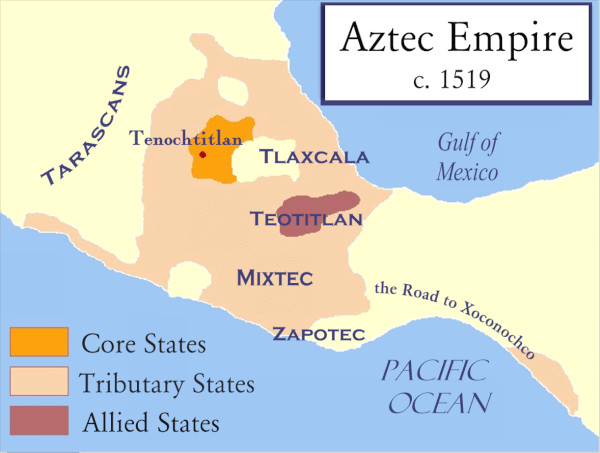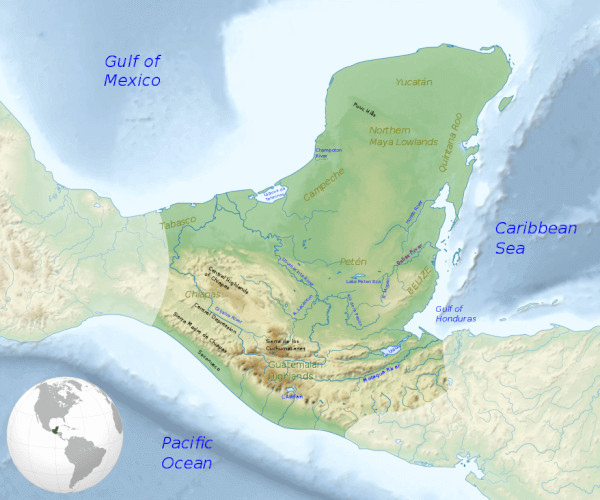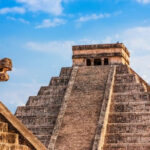Are Mexican people Mayan or Aztec? This is a common question, especially for LGBTQ+ travelers planning a trip to Mexico. Gaymexico.net is here to help you understand the rich tapestry of Mexican heritage, including both its ancient civilizations and its vibrant LGBTQ+ culture. Discover the diverse roots of Mexican identity and plan your inclusive adventure today!
1. Who Are the Aztecs and Where Did They Live?
The Aztecs were a Nahuatl-speaking people who dominated central Mexico between the 14th and 16th centuries. Their civilization thrived in what is now Mexico City.
The Aztecs, also known as the Mexica, established a powerful empire centered in Tenochtitlan, now Mexico City. Their influence extended throughout Mesoamerica, exacting tribute and establishing trade routes. Their society was highly structured, with a complex religious system, impressive architectural achievements, and a sophisticated understanding of agriculture. While the empire fell to the Spanish in 1521, their legacy is woven into the fabric of modern Mexico.
1.1 The Rise of the Aztec Empire
The Aztec Empire emerged from an alliance of three city-states: Tenochtitlan, Texcoco, and Tlacopan. The Aztecs’ military prowess and strategic alliances allowed them to conquer neighboring territories and build a vast empire.
1.2 Aztec Society and Culture
Aztec society was highly structured, with a clear social hierarchy. Religion played a central role in their lives, and they worshipped a pantheon of gods. They were also skilled artisans, creating intricate works of art and architecture.
 A map depicting the extent of the Aztec Empire around 1519, just before the Spanish conquest.
A map depicting the extent of the Aztec Empire around 1519, just before the Spanish conquest.
2. Who Are the Maya and Where Did They Live?
The Maya civilization flourished in southern Mexico and northern Central America for centuries. Their civilization left an enduring legacy.
The Maya civilization, renowned for its advancements in mathematics, astronomy, and art, thrived across a vast territory encompassing parts of present-day Mexico, Guatemala, Belize, Honduras, and El Salvador. From the Preclassic Period (2000 BC – 250 AD) through the Classic Period (250 AD – 900 AD) and into the Postclassic Period (900 AD – 1697 AD), the Maya developed a complex society characterized by independent city-states, hieroglyphic writing, and impressive architectural achievements. Their legacy continues to inspire awe and fascination.
2.1 The Mayan Civilization’s Geographic Reach
The Maya civilization encompassed a vast area, including the Yucatán Peninsula, Guatemala, Belize, Honduras, and El Salvador. This diverse region offered varied resources and environments that influenced Mayan culture.
2.2 Mayan Achievements
The Maya were renowned for their advancements in mathematics, astronomy, and writing. Their calendar system was incredibly accurate, and they developed a sophisticated understanding of celestial movements.
 A map illustrating the geographical spread of the Mayan civilization in Central America.
A map illustrating the geographical spread of the Mayan civilization in Central America.
3. What Are the Key Differences Between the Aztecs and the Maya?
The Aztecs and Maya were distinct civilizations with unique characteristics. Here’s a comparison of their key differences:
| Feature | Aztecs | Maya |
|---|---|---|
| Location | Central Mexico | Southern Mexico and Central America |
| Time Period | 14th to 16th centuries | 2600 BC to 1697 AD |
| Political Structure | Centralized empire | Independent city-states |
| Writing System | Hieroglyphic, less developed | Fully developed hieroglyphic writing |
| Decline | Conquered by Spanish in 1521 | Gradual decline due to various factors |
| Major Cities | Tenochtitlan | Chichen Itza, Tikal, Palenque |
| Legacy | Military strength, tribute system | Advancements in math, astronomy, art |
3.1 Aztec and Mayan Languages
The Aztecs spoke Nahuatl, while the Maya spoke a variety of Mayan languages. Both language families are still spoken today.
3.2 Aztec and Mayan Religion
Both the Aztecs and Maya had complex religious beliefs, but their pantheons and rituals differed significantly. Human sacrifice was practiced by both civilizations, but its scale and purpose varied.
4. How Did the Spanish Conquest Affect the Aztecs and Maya?
The arrival of the Spanish had a devastating impact on both the Aztecs and Maya. The Spanish conquest led to the collapse of the Aztec Empire and significant disruption to Mayan society.
4.1 The Fall of the Aztec Empire
Hernán Cortés conquered Tenochtitlan in 1521, marking the end of the Aztec Empire. The Spanish imposed their rule and culture, leading to the decline of Aztec traditions.
4.2 The Impact on the Maya
The Spanish conquest also affected the Maya, although their decline was more gradual. The Spanish introduced new diseases and imposed their rule, leading to cultural and social changes.
5. Are Mexican People Descendants of the Aztecs and Maya?
Many Mexicans are descendants of both the Aztecs and Maya. Mexican identity is a blend of indigenous and European heritage.
5.1 The Legacy of Indigenous Heritage
Indigenous cultures have had a profound impact on modern-day Mexico. From cuisine to language to traditions, the influence of the Aztecs and Maya is still visible today.
5.2 Cultural Syncretism
Mexican culture is a result of the blending of indigenous and European traditions. This cultural syncretism has created a unique and vibrant identity.
6. What Are Some Notable Aztec and Mayan Archaeological Sites in Mexico?
Mexico is home to numerous Aztec and Mayan archaeological sites. These sites offer a glimpse into the rich history and culture of these civilizations.
6.1 Aztec Sites
- Templo Mayor (Mexico City): The main temple of the Aztec capital, Tenochtitlan.
- Teotihuacan: An ancient city with impressive pyramids and temples, predating the Aztecs.
6.2 Mayan Sites
- Chichen Itza (Yucatán): A major Mayan city with iconic structures like the Temple of Kukulcan.
- Tikal (Guatemala): One of the largest and most impressive Mayan cities, located in present-day Guatemala but historically part of the Mayan civilization.
- Palenque (Chiapas): Known for its beautiful architecture and intricate carvings.
7. How Can LGBTQ+ Travelers Explore Mexico’s Indigenous Heritage?
LGBTQ+ travelers can explore Mexico’s indigenous heritage while supporting inclusive tourism. Here are some tips for respectfully engaging with local communities:
- Visit Archaeological Sites: Explore the ruins of Aztec and Mayan cities.
- Learn About Indigenous Cultures: Engage with local guides and communities to learn about their traditions.
- Support Local Artisans: Purchase handicrafts and artwork directly from indigenous artists.
7.1 Gaymexico.net: Your Guide to LGBTQ+ Travel in Mexico
Gaymexico.net offers resources for LGBTQ+ travelers interested in exploring Mexico’s cultural heritage. Find information on inclusive tours, accommodations, and cultural events.
7.2 Tips for Respectful Travel
When visiting indigenous communities, it’s essential to be respectful of local customs and traditions. Dress modestly, ask for permission before taking photos, and be mindful of local sensitivities.
8. What Is the Current Status of Indigenous Communities in Mexico?
Indigenous communities in Mexico continue to face challenges, including poverty, discrimination, and lack of access to resources. However, they are also working to preserve their cultures and advocate for their rights.
8.1 Challenges and Opportunities
Indigenous communities often struggle with issues such as land rights, access to education, and healthcare. However, they are also finding new ways to promote their cultures and improve their livelihoods.
8.2 Supporting Indigenous Rights
There are many organizations working to support indigenous rights in Mexico. By supporting these organizations, you can help ensure that indigenous communities have a voice in their future.
9. What Are Some Misconceptions About the Aztecs and Maya?
There are many common misconceptions about the Aztecs and Maya. It’s essential to rely on accurate information and avoid perpetuating stereotypes.
9.1 Common Myths
- The Maya Predicted the End of the World in 2012: This is a widely debunked myth. The Maya calendar is cyclical, and 2012 simply marked the end of one cycle.
- The Aztecs Were Bloodthirsty Savages: While human sacrifice was practiced, it was not the only aspect of Aztec culture. They were also skilled farmers, artisans, and astronomers.
9.2 Seeking Accurate Information
To learn more about the Aztecs and Maya, consult reputable sources such as academic journals, museums, and cultural organizations.
10. Frequently Asked Questions (FAQ) About Mexican Heritage
Here are some frequently asked questions about the heritage of Mexican people:
-
Are all Mexicans descended from the Aztecs or Maya?
No, Mexican heritage is diverse, including indigenous, European, African, and Asian influences. -
Do the Aztecs and Maya still exist today?
Yes, descendants of both civilizations live in Mexico and Central America. -
What languages do indigenous people in Mexico speak?
Nahuatl (Aztec) and various Mayan languages are still spoken today. -
Where can I see Aztec ruins in Mexico?
Templo Mayor in Mexico City and Teotihuacan are major Aztec sites. -
Where can I see Mayan ruins in Mexico?
Chichen Itza, Palenque, and Tulum are popular Mayan sites. -
Are there any LGBTQ+-friendly tours of Aztec and Mayan sites?
Check with local tour operators for inclusive and respectful tours. -
How can I support indigenous communities in Mexico?
Buy handicrafts from local artisans and support organizations that promote indigenous rights. -
What are some common misconceptions about the Aztecs and Maya?
Avoid stereotypes and seek accurate information from reputable sources. -
Is it safe for LGBTQ+ travelers to visit indigenous communities in Mexico?
Research the local customs and be respectful of cultural sensitivities. -
Where can I find more information about LGBTQ+ travel in Mexico?
Gaymexico.net offers resources for LGBTQ+ travelers.
Discover Your Mexico on Gaymexico.net
Explore the rich history and vibrant culture of Mexico with Gaymexico.net. As an LGBTQ+ traveler, understanding the deep roots of Mexican identity, including the Aztec and Mayan civilizations, enriches your travel experience. Mexico’s blend of ancient heritage and modern vibrancy creates a unique tapestry that welcomes all. Visit gaymexico.net today to start planning your unforgettable journey!
Ready to immerse yourself in the cultural wonders of Mexico? Discover LGBTQ+-friendly accommodations, tours, and events. Contact us at +1 (213) 380-2177 or visit our address at 3255 Wilshire Blvd, Los Angeles, CA 90010, United States. Let gaymexico.net be your trusted guide to exploring the heart of Mexico.
